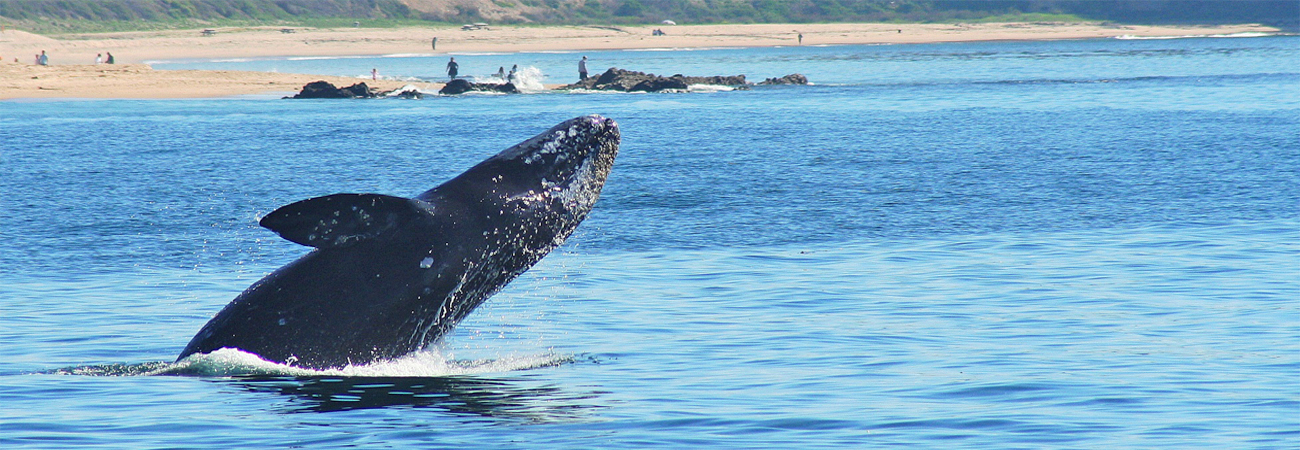
Baleen Whales By Size
Baleen Whales Smallest to Largest:
Here are the baleen whales we see listed by size. These are the most common baleen whales that we see on our trips. This list does not include all of the baleen whales world wide.
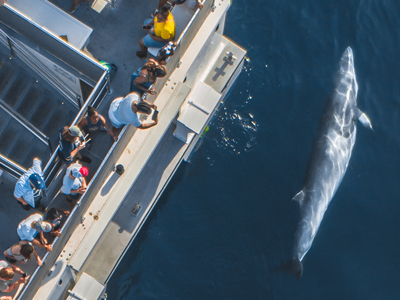
Minke Whale
The Minke Whale (Balaenoptera acutorostrata) is a relatively small baleen whale. It has a streamlined body with a pointed snout, a dark gray to black coloration on the upper side, and a lighter underside. Minke Whales have baleen plates for filtering prey, and they are agile swimmers known for their lunge feeding technique. They are found in oceans worldwide and primarily feed on small fish, krill, and other small organisms. While they are not currently endangered, some populations face conservation challenges.
Average length of 23 to 33 feet
Average length of 23 to 33 feet
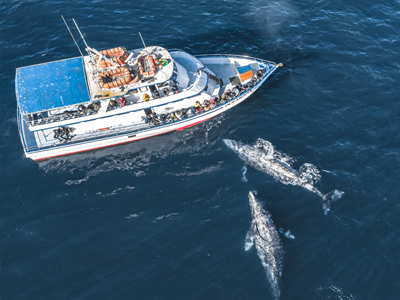
Gray Whale
The Gray Whale (Eschrichtius robustus) is a medium-sized baleen whale known for its annual long-distance migrations. It has a mottled gray coloration and lacks a dorsal fin but has a dorsal ridge. Gray Whales are bottom feeders, primarily consuming small invertebrates by filtering sediment from the ocean floor. Once critically endangered due to whaling, they have made a recovery and are now listed as a species of least concern.
Average length of 39 to 49 feet
Average length of 39 to 49 feet
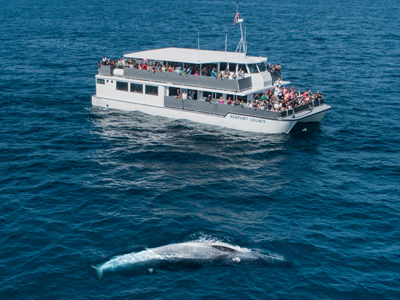
Bryde's Whale
The Bryde's Whale (Balaenoptera brydei) is a medium-sized baleen whale found in warm and tropical waters worldwide. Bryde's Whales have a streamlined body with a dark gray or bluish coloration. They have a pointed snout, a dorsal fin located towards the middle of their back, and long, slender flippers. They are agile swimmers and feed on small fish, krill, and other prey by lunging and engulfing large volumes of water and food.
Average length of 39 to 52 feet
Average length of 39 to 52 feet

Humpback Whale
The Humpback Whale (Megaptera novaeangliae) is a large baleen whale known for its distinct appearance and acrobatic behavior. Humpback Whales have a stocky body with long pectoral fins, knobby protrusions on their head called tubercles, and a distinctive long, white or light-colored underside of their flukes (tail). They are known for their breaching, tail-slapping, and complex vocalizations, often referred to as "whale songs". They are opportunistic feeders, consuming krill and small fish using a technique called bubble-net feeding.
Average length of 43 to 52 feet
Average length of 43 to 52 feet
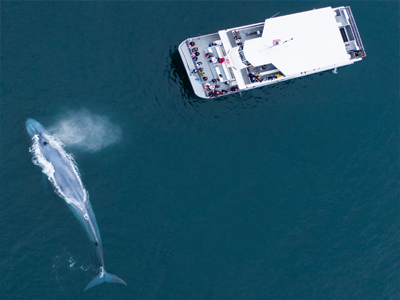
Fin Whale
The Fin Whale (Balaenoptera physalus) is the second-largest animal on Earth. It has a sleek and elongated body, with a dark gray or bluish coloration on their upper side and a lighter underside. They have a tall and curved dorsal fin located towards the rear of their body. Fin Whales are known for their powerful and streamlined swimming abilities, reaching speeds of up to 23 miles per hour. They are filter feeders, using baleen plates to strain and consume krill, small fish, and other prey. Fin Whales have a global distribution and are found in both offshore and coastal waters.
Average length of 66 to 85 feet
Average length of 66 to 85 feet
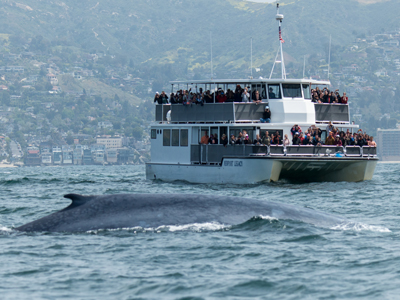
Blue Whale
The Blue Whale (Balaenoptera musculus) is the largest animal ever known to have existed. Blue Whales have a long and streamlined body with a bluish-gray coloration, often with mottled patterns and light spots. They possess a small, curved dorsal fin located towards the back of their body. They are filter feeders, consuming enormous quantities of krill and other small marine organisms by engulfing large volumes of water and filtering it through baleen plates. Blue Whales are known for their low-frequency vocalizations, which can travel vast distances underwater.
Average length of 79 to 98 feet
Average length of 79 to 98 feet
Reserve your whale-watching trip!
Make your online reservation below, or call (949) 675-0551 to reserve.
SHARE
FOR RESERVATIONS, CALL (949) 675-0551